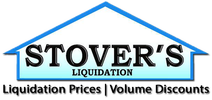Choosing the Right Hardwood Grade
One of the most frustrating issues in flooring is having a beautiful new hardwood floor installed that doesn’t look like what the customer expected. Problems concerning the appearance of different grades of flooring are among the most numerous complaints that flooring contractors have to deal with.
Because the characteristics of wood species and types of wood flooring vary so much, there are no standard grades for all wood floors. Some wood flooring grades are determined by industry associations, such as the NWFA/National Oak Flooring Manufacturers Association, the Maple Flooring Manufacturers Association and Canadian Lumbermen’s Association. Much of the unfin- ished solid wood flooring from the United States and Canada follows the grading rules from one of those associations. Individual manufacturers also can create their own or proprietary grades.
Most wood flooring grades deal with the aesthetics of the floor, not the serviceability. All grades will perform equally well; it’s their facial appearances that vary. In this sense, flooring of a higher grade is not necessarily better. It is a matter of personal taste.
Most grading rules also dictate the average length of the boards involved. Higher grades of flooring usually have longer boards, so be prepared for many shorter boards if you order a lower grade of wood flooring.
An example of how grades work are the rules for one of the most common wood floors installed; solid, unfinished red or white oak. Most of those floors follow the grades developed by NOFMA. Under those grading rules, there are four levels of oak flooring; Clear, Select, No. 1 Common and No. 2 Common.
Clear NOFMA Oak is very uniform in color, with very few small character marks. Its average board length is 3 ¾ feet. Select oak has more color variation and more natural character marks such as small knots. The average board length for Select oak is 3 ¼ feet.
No. 1 Common has a much more varied appearance, with mineral streaks, greater color variation, and more character marks, and average board length is 2 ¾ feet.
No. 2 Common, has a “rustic” appearance, with just about any natural character mark, including
large knots and very dark boards.
Another factor that can affect the appearance of your hardwood floor is the way the flooring was cut from the log itself. Plainsawn flooring will show great variation in grain patterns on the surface of the floor. Rift or Quartersawn flooring will have a relatively uniform grain pattern.
Grading works differently for engineered wood floors. Most manufacturers of engineered product do not create grades. Instead, they create product or brand names. The products are categorized according to veneer, finish and milling.
While most solid wood flooring products have average length requirements, most engineered floors do not. Generally, manufacturers’ product names reflect three levels or more of quality, ranging from a premium level down to what is generically referred to as cabin grade. At the top level, or premium, the flooring has almost no milling defects and minimal character marks such as knots, mineral streaks or pin worm holes. The next grade, typically a character grade, allows more natural character marks and some minor milling defects that may cause overwood, small finish skips and shorter average lengths. Wood with character marks such as mineral streaks may
be used for darker-colored floors. Cabin-grade floors allow unlimited character marks and milling defects. The details of the warranties decrease accordingly with the quality of the flooring.
Because wood is a natural material, no two boards are ever going to be the same. A floor of one grade or brand name may appear slightly different than another floor of the same name. For an accurate representation of what different grades will look like, it is vital that you see a large sample of the floor before you place your order. Ensure that your expectations don’t clash with the reality of your installed floor.
For prefinished hardwood products, these are commonly seen grades:
Clear Grade: This is the best grade of hardwood flooring because there are few color variations, board lengths are not widely varied, and there are little to no visible knots or pinholes.
Select and Better: This grade is slightly lower than the clear, still presenting uniform color and little to no knots and pinholes.
#1 Common: This grade presents with more color variation, shorter board length with greater length variation, with an increased chance of visible knots and pinholes.
#2 Common: Boards show natural character, with darker and lighter boards, shorter board length, with an increase in visible knots and pinholes.
Cabin Grade – Cabin grade is for those who are looking for a rough-hewn look in hardwood flooring; allowed checking, unfilled knot holes and worm holes, no splits, no loose knotholes.
Examples of the Wood Cuts
Plainsawn – The most common cut. Contains more variation due as the growth rings are more conspicuous.
Quartersawn – Wood twists and cups less and wears more evenly.
Riftsawn – The cut is at a slightly different angle than quartersawn.
Special Thanks JJ Haines for the information
